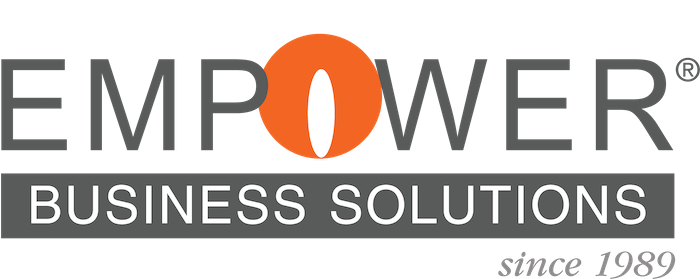The Cost of Staying Small
Businesses don’t fail because they lack opportunity, they fail because they can’t scale efficiently. Many small and mid-sized companies rely on QuickBooks in their early stages, and while it’s a great entry-level tool, growth exposes its limitations. As operations expand, financial complexity increases, and the need for automation and real-time insights becomes critical. This is where ERP, Enterprise Resource Planning, solutions deliver undeniable financial returns.
The transition to an ERP system isn’t just a software upgrade, it’s a strategic investment that directly impacts profitability, efficiency, and growth. Yet, many companies hesitate, fearing the costs and disruption of an ERP transition. What they don’t realize is that the cost of waiting—through inefficiencies, missed revenue opportunities, and labor-intensive manual work—is often much higher than the cost of implementation. Here’s how an ERP system pays for itself across three key areas: inventory optimization, automation savings, and revenue growth.
1. Inventory Optimization: Maximizing Every Dollar
Holding too much inventory ties up capital, and having too little leads to lost sales. QuickBooks offers basic tracking, but as businesses scale, they need real-time inventory data across multiple locations, accurate demand forecasting, and automated replenishment tools.
Inefficiencies in inventory management result in costly problems, such as:
- Overstocking, which increases storage and carrying costs
- Stockouts that lead to lost revenue and dissatisfied customers
- Lack of visibility across warehouses and sales channels
ERP systems like Acumatica integrate purchasing, sales, and production data, allowing businesses to use AI to maximize their operational efficiency
- Reduce excess inventory by forecasting demand with AI-driven insights
- Minimize stockouts with automated reorder points
- Optimize warehouse space, lowering carrying costs
- Improve supply chain coordination, reducing lead times and ensuring timely fulfillment
ROI Impact: Companies that move from manual or outdated inventory systems to ERP see an average 20 to 30% reduction in carrying costs and fewer lost sales due to stockouts. With better forecasting, businesses can predict demand fluctuations and align procurement strategies to avoid costly mistakes.
2. Automation Savings: Cutting Costs by Eliminating Manual Work
Growth often leads to a patchwork of spreadsheets, disconnected systems, and redundant data entry. QuickBooks users frequently rely on manual processes to reconcile accounts, track sales, and generate reports, consuming valuable time and increasing error rates. These inefficiencies don’t just slow down operations, they also create risks for compliance issues, accounting discrepancies, and operational bottlenecks.
ERP solutions automate critical workflows, such as:
- Financial Close Processes: Reduce month-end reconciliation time from weeks to days
- Invoicing and Accounts Payable: Automate billing, approvals, and payment processing
- Order Management: Sync orders across e-commerce, CRM, and supply chain systems in real time
- Payroll and HR: Automate payroll calculations, tax reporting, and compliance tracking
By eliminating these repetitive manual tasks, businesses can free up valuable employee time to focus on more strategic initiatives, such as customer service, business development, and process improvement.
ROI Impact: Businesses using ERP systems report a 50% increase in accounting efficiency, 70% faster financial closes, and significant reductions in human error costs. Automation ensures accuracy in reporting and compliance, reducing costly errors and rework.
3. Revenue Growth: Scaling Without Limits
ERP doesn’t just help businesses manage what they already have, it creates opportunities for revenue expansion. Whether it’s entering new markets, scaling e-commerce, or improving customer service, ERP systems provide the infrastructure to grow without breaking existing workflows.
ERP supports business growth in multiple ways:
- Better Customer Experience: Faster response times, real-time inventory tracking, and automated CRM integration improve service and sales
- E-commerce and Multi-Channel Sales: Integrate online orders seamlessly with fulfillment and accounting
- Pricing and Profitability Management: Dynamic pricing models optimize margins across different markets
- Scalability for New Locations and Business Units: A centralized system allows expansion without operational chaos
ROI Impact: Companies that implement ERP experience an average revenue increase of 15% within the first two years due to better operational control and customer insights. More accurate financial forecasting allows for strategic investments in growth areas, such as product expansion, market penetration, and digital transformation.
Making the Leap: Is Now the Right Time?
Upgrading to ERP may seem like a major step, but the real cost is in waiting too long. Every month spent relying on disconnected systems means wasted labor, lost sales, and inefficiencies that eat away at profitability.
Companies that delay their ERP transition often experience:
- Increased labor costs due to inefficient workflows
- Difficulty meeting customer demand due to poor inventory management
- Higher risk of financial inaccuracies and compliance issues
- Limited ability to scale due to outdated systems
On the other hand, businesses that invest in ERP early set themselves up for sustainable growth, streamlined operations, and a competitive edge in their industry. ERP isn’t an expense, it’s an investment that delivers measurable financial returns, allowing businesses to operate smarter, faster, and with greater confidence.
If your business is experiencing rapid growth, manual bottlenecks, or increasing financial complexity, it’s time to explore a smarter, scalable solution. Let’s have a conversation about how ERP can transform your operations and position your business for success.
Schedule a Future-Ready Technology Review today and take the first step toward smarter scaling.
